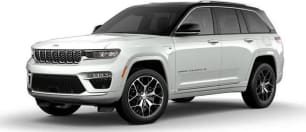The Q4 e-tron is available in two body shapes – a handsome if quite conservative wagon SUV style, as well as a sleeker coupe-SUV derivative that Audi calls Sportback.
The latter is expected to be the slightly more popular of the two designs, despite costing about $1600 more.
Obviously slotting in between the smaller Q3 and larger Q5, the Q4 e-tron almost shadows the latter size wise, and is available in either 45 RWD or 55 quattro all-wheel drive (AWD) guises.
Since both share the same, largish (82kWh) battery, Audi reckons most buyers will choose the 45, especially as its pricing in either body style slips under the Australian Federal Government’s Luxury Car Tax (LCT) threshold.
Kicking off from $84,900 before on-road costs, the base grade includes a full suite of safety tech such as full stop/go adaptive cruise control, an electronic instrument display, heated front seats, three-zone climate control, a gesture-controlled powered tailgate and 19-inch alloy wheels.
These come on top of the LED headlights, an 11.6-inch touchscreen, full wireless multimedia connectivity, a premium audio system, electric driver’s seat adjustment, navigation, folding/heated/kerb-side-view mirrors, roof rails and automatic parking.
From the Sportback 45 and up, the S-Line package is standard, bringing with it 20-inch alloys.
All the essentials then.
But, on the base 45s, be prepared to spend extra for luxuries like bolstered “sports” seats, a head-up display, a powered front passenger seat, driver’s side memory settings, a 360-degree camera instead of the regular rear-only view and privacy glass.
The 55 quattro grades from $105,900 include most of these, along with an extra electric motor for AWD and considerably more muscle, as well as variable-ratio steering, Matrix LED headlights, dynamic indicators, extra lane-assist intervention and the aforementioned S-Line trim shod with 20-inch alloys.
Now, against the remodelled Tesla Model Y Juniper, the Audi costs considerably more, but it is also a more upmarket (and less conspicuous) luxury brand that prioritises quality.
The iX1, iX2, EQA and EX40 cost around the same as the Q4 e-tron, but aren’t quite as large, offer smaller batteries (Volvo-aside), are based on other internal combustion engine (ICE) models compared to the Audi’s ground-up dedicated-EV architecture and, except for the BMWs, are getting somewhat long in the tooth.
Conversely, fresh designs, bespoke electric platforms and bigger batteries set the larger yet less-expensive Polestar 4 as well as the more-compact yet loaded Genesis GV60 apart against the Audi’s aforementioned competitors, but neither challenger brand is as established as all the others. Finally, Lexus’ UX300e is too compact while the larger RZ450e has priced itself out of contention here.
So, why the delay getting the Q4 e-tron to Australia? Especially when the brand has offered the bigger and much-more expensive Q8 e-tron SUV since the beginning of this decade?
Initially, demand in Europe was through the roof and supply could not keep up. Then Audi elected to wait for an update that debuted globally in September 2023, ushering in a raft of changes, to make its most important EV ever more competitive in a wildly shifting market.
These include efficiency gains leading to more range thanks to an upgraded motor and battery, stronger performance, faster charging, retuned steering, comfier suspension and improved safety spec.
Not that you’d be able to spot the differences comparing new Q4 e-tron with old. Nor even against sibling SUVs…

